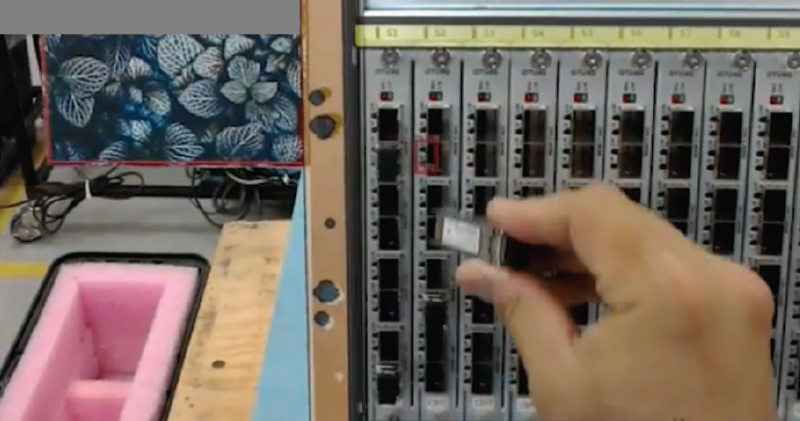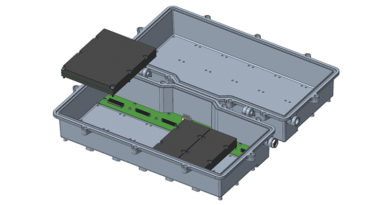The Fourth Revolution:
New Network Technologies Require New Approaches to Training
A few years ago, the World Economic Forum observed that we were then beginning to enter “the Fourth Industrial Revolution… characterized by a fusion of technologies that is blurring the lines between the physical, digital, and biological spheres.” They also went on to explain that while this current Fourth Industrial Revolution was much like the Third, it was marked by the fact that it also was introducing ever faster changes in technology. It also noted that those technologies were increasing their scope in our day-to-day lives. It is hard to argue that technology has become more pervasive and complex. Most of us have some sort of smart device in our homes that is listening for our voice commands, keeping track of where we are in the home, adjusting the temperature or lighting and in many cases, just watching us. Our cars can now automatically brake and accelerate in heavy traffic and soon will be doing the driving for us. There are an ever-growing number of highly complex sensors and compute devices that, while they may make our lives arguably easier, most of us have no idea how they really work or what to do when they malfunction and things go wrong.
The increasing complexity of technology is also inserting itself into the workspace, specifically in this case, the world of cable television outside plant. In the ongoing efforts to reduce the costs of space and power in the headend and push bandwidth closer to the customer the cable industry has adopted what is termed the “distributed access architecture” or “DAA”. The Fourth Revolution challenge that DAA brings is we are now starting to move more complexity from where it was previously concentrated in the headend and are pushing it out to the edge and distributing it throughout the network. This means that we need the outside plant and field technicians — whose roles were originally mostly a mechanical activity, using tools to track down RF impairments and fix the electrical and mechanical issues that created them — to evolve their role. With DAA, we will now be requiring them to have a deeper understanding of what is happening at the protocol layer in order to troubleshoot and resolve issues.
As the network continues to become more distributed and services converge, it will become increasingly common for outside plant and field technicians to be required to troubleshoot highly complex devices and systems. There will be remote PHY devices, mobile xHaul and business services aggregation and wireless transmission systems. Further complicating the issue is the networks themselves are becoming more automated and self-aware. Technologies such as software-defined networks allow networks to automatically reconfigure themselves based on the demands of users and even applications. Increased automation from technologies such as low latency DOCSIS provide the promise of allowing the CMTS to automatically prioritize upstream traffic simply because the user’s gaming application makes a request of the CMTS. This protocol level automation of the network is necessary because modern applications are requiring lower latency and higher throughput, and delivering this on demand will increase in customer satisfaction. However, troubleshooting this new network will no longer be the same as finding a cracked feeder cable or replacing a faulty power supply. The outside plant and field technicians of the future will need to more deeply understand how the bits are moving across the physical plant in order to quickly and effectively solve issues.
In their 2018 “The Future of Jobs Report” the World Economic forum noted that 54% of the workforce will need to receive additional training or in some cases, be completely retrained as the future of work will require a more proactive and creative workforce. The challenge for employers is that training is expensive, not only because of the cost of the training and the employee downtime but having more advanced training means that the employee can and will demand higher compensation. Glassdoor, a website that crowdsources salary information states that the average salary in the U.S. for a cable technician is $41,518. So, we now need to train that same cable technician with all the functional and practical protocol level understanding so they can effectively troubleshoot the equipment that once lived in the headend. Having done so, you now have the equivalent experience of a telecommunications technician whose salary averages $72,868. It is important to note that the author is not advocating for avoiding training. Good training is an essential element of ensuring that our technical staff can effectively perform their jobs. That said, what if we looked at the problem differently? What if we used the same technology that is causing the problem to empower technicians with better contextual information they need to perform complex tasks?
Two emerging workplace technologies that can do this are augmented and virtual reality. While both are similar in that they present the user with computer generated contextual information, they do so in different ways and as such, each has its own unique use cases. Augmented reality (AR) provides the user with a view of the environment around them overlaid with additional information such as the characters and gaming elements shown on the map in the popular game Pokémon Go! Virtual reality (VR) alternatively immerses the user into a virtual environment while blocking out external stimulus. VR is popularly used to simulate alternate realities and allow the user to explore them such as in multi-player first person combat games. Some examples of augmented reality used by businesses are Google’s addition of AR to overlay detailed information in its Google Maps app. Military units are using AR to simulate enemy combatants during exercises and schools are using AR to bring simulated items into the classroom such as Egyptian artifacts, allowing the students to interact with them. Virtual reality is being used by the real estate industry to allow clients to immerse themselves into and explore potential properties and many businesses such as Walmart are using VR to provide 360 degree views of products and to better train and prepare their employees for rush seasons like Black Friday.
At Fujitsu we are using AR on our manufacturing floor to allow our technicians to quickly and consistently build out complete systems to a customer’s specification. Using our purpose built Digital AR Workbench utility, the technicians, using a Microsoft HoloLens, are shown contextual information that walks them through a workflow to install the correct pluggable interfaces into a system. The technician scans the barcode of the pluggable he wishes to install next and the application places an indicator in the AR view showing him which slot to place the pluggable interface. The application also shows how many steps remain to complete by placing indicator markers over the appropriate slots on the system. With this AR application, error rates are decreased because the technician does not need to know anything about the equipment being assembled as he is guided clearly as to what step to take next and where to plug things in. The application has proven itself with an average reduction in pluggable installation time from 53 to 31 minutes and the entire shelf assembly time reduced from 120 to 97 minutes.
There are literally any number of applications that, with the appropriate level of imagination, can be created to empower technicians. Headend engineers can virtually visit remote sites to walk through for planning and design purposes. Field technicians can be shown an augmented view of the ground in front of them showing the geolocation data where buried plant exists. We can overlay information from PNM tools or the network assurance and management systems to show exactly where a fault in the network lies and then give the technician detailed workflow information about how to quickly resolve the issue. As technician tools evolve from the physical tools such as those used for splicing coax to virtual tools allowing them to visualize what information is traveling down that same piece of coax, today’s technician will in the future be better empowered to understand and work with even the most complex technologies and systems.

External View – SFP parts installation

Operator’s View – Scan barcode on the SFP box and HoloLens application will indicate its position
 Bill Beesley,
Bill Beesley,
MSO Strategy and Planning,
Fujitsu Network Communications Inc.
Bill Beesley brings more than 20 years of telecommunications industry experience to his current role in MSO Strategy and Planning in the Global Technology Business Unit at Fujitsu Network Communications. He is responsible for providing commercial insight for the cable market, and driving business development and product strategy for Fujitsu. Prior to joining Fujitsu in 2011, Bill worked at Cox Communications for 14 years, where he held a variety of executive engineering and leadership roles at both the corporate and system level. Bill holds a Bachelor of Science in Information Technology Management from Bellevue University in Nebraska, and a Master of Applied Science in Telecommunications Management from the University of Denver.

